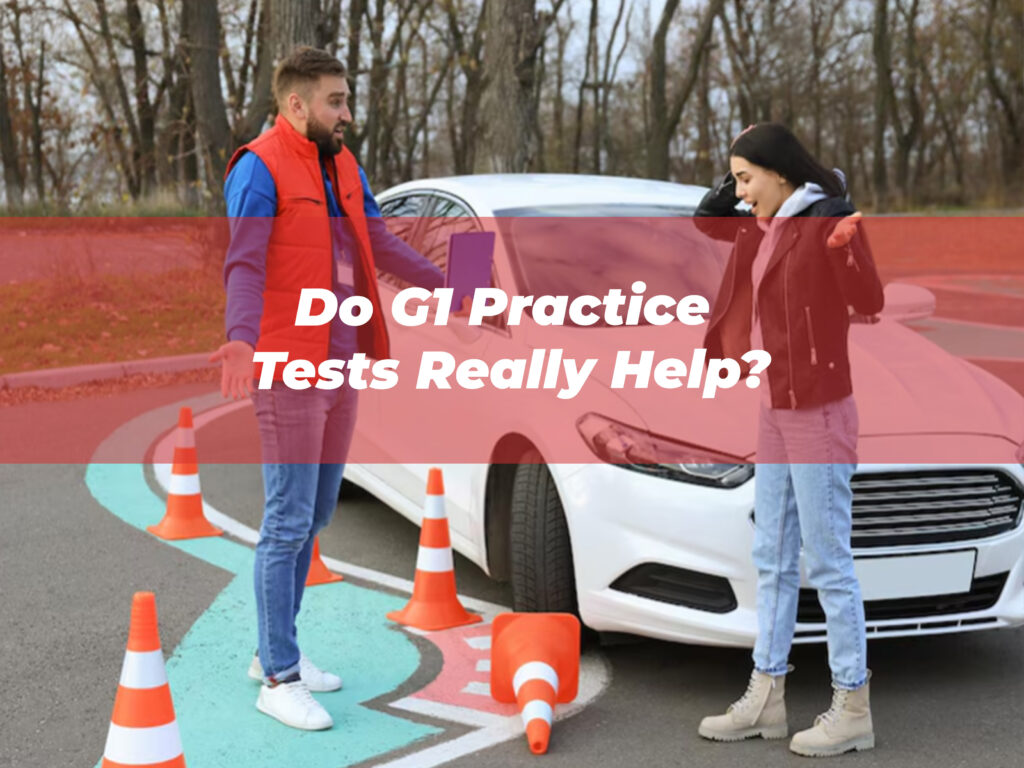Taking your driving test is a big moment. After weeks of preparation, practice, and maybe a few sleepless nights, you’re finally ready to put your skills to the test. But for many first-time test-takers, nerves, mistakes, and a lack of preparation lead to an unfortunate outcome. Failing your first road test isn’t uncommon, but understanding why it happens can make all the difference.
Why do so many people fail their road test the first time? More importantly, how can you avoid these pitfalls? This blog dives into the top seven reasons people fail their first driving test and provides actionable tips to help you pass with flying colors.
1. Nervousness That Spins Out of Control
One of the most common reasons drivers fail their first road test is First Road Test. Everyone feels a bit anxious before their test, and that’s normal! But, when those nerves take over, they can interfere with your ability to focus, make decisions, or remember basic driving rules.
What Does Nervousness Look Like?
- Forgetting to check mirrors or blind spots.
- Overthinking every move, leading to hesitation or abrupt decisions.
- Being unable to follow the examiner’s directions because you’re too focused on self-doubt.
How to Combat Test-Day Nerves
- Practice consistently: The more confident you feel First Road Test the wheel, the less room anxiety will have to creep in.
- Simulate test conditions: Do mock tests with your instructor or a friend acting as the examiner.
- Stay calm: Practice deep breathing techniques or calming exercises before your test.
- Focus on the present moment: Don’t dwell on what you just did or worry about the next task. Take it one instruction at a time.
2. Improper Use of Mirrors
Knowing how and when to use your mirrors is a fundamental skill that’s closely evaluated during a road test. Many new drivers forget this step or fail to check their mirrors frequently enough, which is a critical safety mistake.

Common Mirror Mistakes
- Forgetting to check mirrors when changing lanes or merging.
- Neglecting to check mirrors during turns or while reversing.
- Only glancing in one mirror instead of scanning all relevant First Road Test.
Ways to Improve Mirror Use
- Make mirror checks part of your driving routine. For example, every time you approach an intersection or prepare to turn, remind yourself to check your mirrors.
- Practice exaggerated mirror checks while learning, which will help make it second nature. Remember that your examiner needs to see you actively checking them.
3. Failing to Observe Proper Traffic Rules
Road rules aren’t just suggestions; they’re essential for ensuring safety on the First Road Test. During the test, even seemingly small infractions, like rolling through a stop sign or exceeding the speed limit by just a few miles per hour, can lead to failure.
Examples of Rule-Related Errors
- Not coming to a full stop at stop signs or red lights.
- Ignoring yield signs or making an illegal right turn on red.
- Not adhering to speed limits or failing to adjust speed in response to road conditions.
How to Stay on Top of Traffic Rules
- Review the driver’s handbook for your area thoroughly.
- Take time on each practice session to focus on specific rules like stopping, yielding, or speeding. Practice makes perfect.
- Always be cautious and deliberate with your actions. For instance, even if there’s no traffic at a stop sign, still come to a full stop.
4. Failing to Check Blind Spots
Blind spots are one of the trickiest parts of driving for new First Road Test to master. Forgetting to check them during lane changes, merges, or turning is one of the most common reasons driving tests go poorly.
Why Blind Spots Are a Big Deal
Examiners are hypersensitive to blind spot checks because ignoring them in real-life situations could be dangerous for you and other drivers on the road.
Tips for Blind Spot Success
- Practice the “look and signal” routine: Check your mirrors first, then physically turn your head to check the blind spot, and finally signal before changing lanes.
- Treat blind spots with extra attention during merges or roundabouts, where other drivers’ behaviors can be unpredictable.
5. Poor Steering Control
Steering seems simple, right? Wrong. Maintaining proper First Road Test control under test conditions is harder than it looks, and sloppy steering is often a red flag for inexperienced drivers.
What Does Poor Steering Look Like?
- Oversteering or turning too sharply when making basic First Road Test.
- Understeering, especially during cornering or lane adjustments.
- Failing to keep both hands on the wheel (in a 9-and-3 or 10-and-2 position).
Solutions for Steering Issues
- Practice smooth and gradual turns in low-pressure environments (like an empty parking lot).
- Focus on hand-over-hand steering if your test requires it.
- Be deliberate. Avoid jerky or rushed movements when turning, merging, or making adjustments.
6. Improper or Late Use of Signals
Indicators are the simplest way to communicate your intentions on the road, yet they’re frequently overlooked or not used properly. This error will almost always result in losing points on your road test or a fail.
What Goes Wrong with Signals?
- Forgetting to signal before turns, lane changes, or First Road Test.
- Activating your signal too late, leaving other drivers (and the examiner) unsure of your intentions.
- Leaving the signal on long after completing a maneuver.
How to Signal Like a Pro
- Make it a habit to activate your signal 100-200 feet before making a turn. If you’re unsure, err on the side of signaling early.
- Check mirrors and blind spots before signaling, as this will ensure you are aware of your surroundings before moving.
7. Struggling with Parking or Maneuvers
Maneuvers like parallel parking, three-point turns, and reverse parking are a major part of many driving tests. Failure to master these practical skills can lead to losing valuable points, or in some cases, automatic failure.
Types of Parking Mistakes
- Struggling to position the car correctly within the designated First Road Test.
- Failing to check surrounding traffic or pedestrians before beginning a maneuver.
- Hitting a curb, pole, or other obstacle during the process.
How to Master Parking and Maneuvers
- Spend extra practice time focusing on challenging parking techniques like parallel parking or reversing into a spot.
- Always survey your surroundings, and use mirrors or cameras (if permitted), while performing these movements.
- Break it down into small, manageable steps. For example, when parallel parking, first focus on alignment with the car ahead, then the angle of the reverse, and so on.
Bonus Tips for Road Test Day Success
Now that we’ve gone through the top reasons drivers fail their first road test, here are a few additional tips to help you make a great impression when it matters most:
- Familiarize yourself with the test route: If possible, First Road Test around the test center area beforehand to get comfortable with the road layout.
- Get enough sleep: It’s tempting to stay up late studying road rules, but being well-rested is far more effective.
- Stay positive: A professional yet friendly demeanor will help you feel calmer and create a better impression with your examiner.
- Ask for clarification: If you don’t understand an instruction, don’t hesitate to ask the examiner to repeat it.
- Don’t sweat past mistakes: Made a small mistake during the test? Don’t dwell on it. Stay focused, as the next task could be your chance to impress!
Final Words
Passing your first road First Road Test isn’t just about having technical driving skills; it’s about balance. Remaining calm, following rules, and applying the techniques you’ve practiced are equally important. It’s normal to feel nervous or face hurdles, but by understanding the common reasons people fail, you’ll be better equipped to avoid them.
Remember, whether it takes one attempt or three, success is within reach. Every mistake brings new lessons. When the big day rolls around, take a deep breath, trust in your training, and keep your eyes on the road ahead. Before you know it, you’ll be celebrating your brand-new driver’s license!










